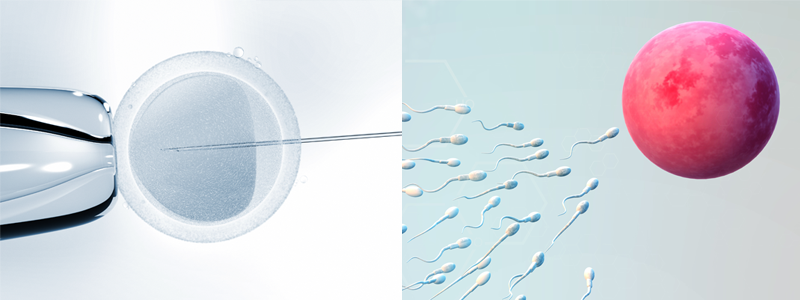At CREATE we have long pioneered and practiced Natural and Mild IVF as a safer alternative to conventional IVF treatment. Our approach combines success rates that are equal to or better than the national average for IVF, while being gentler on women’s bodies, with better health outcomes
Conventional IVF uses strong medication to shut down the normal menstrual cycle (‘down-regulation’) followed by stimulation to make the ovaries produce more eggs than they would do naturally, with the aim being to maximise the number of eggs collected. While it may seem logical to think that ‘more is better’, this process can actually be harmful for women, mothers and babies, and doesn’t necessarily lead to better success rates. The drug protocols involved can cause menopause-like side effects, and the potentially dangerous ovarian hyper stimulation syndrome. These are the impacts on women. We’re now increasingly understanding the potential for negative side effects for babies who are born of conventional IVF treatment. In natural IVF there is no need for medication because the process relies on the body’s own selection mechanism to collect the healthiest and highest quality egg or eggs in a natural cycle.
There is now considerable scientific evidence to show that embryos produced from IVF cycles with no stimulation or lower stimulation can be of higher quality than those produced in conventional IVF, and that a high proportion of embryos created in conventional IVF can have chromosomal abnormalities.
New evidence backs theory that natural IVF is better for babies
In 2017, another study added to the growing body of evidence that natural IVF results in healthier babies. The study by a group of American scientists analysed the birth weights of babies born to women through both conventional and natural IVF. It found that babies from the natural IVF cohort had a significantly higher average birth weight.
While the study examined the cycles of a relatively small sample of women – 364 in total – it produced statistically significant results that suggest that natural IVF could help to reduce the risk of low birth weight in babies born through IVF. The data indicates that natural IVF may not just increase the likelihood of babies going to term but may actually change outcomes even for babies born early, perhaps due to a higher quality egg being collected without the use of stimulating drugs.
Natural IVF – original and still best?
The very first IVF baby Louise Brown, born in 1978, was the result of natural IVF treatment. Over the years, the natural process became less popular with IVF providers. Conventional IVF is now the norm. Many clinics prefer to offer it as it is likely to result in the collection of more eggs, though there has long been speculation about the possible long and short-term effects on health. Unfortunately for women seeking treatment, it also takes longer (three to four weeks of medication compared to none at all in natural IVF and three to four days in modified natural) as well as, as we now know, having a negative effect on the quality of embryos produced and outcomes for babies.
Putting the health and well-being of mothers and babies first
Our award-winning medical team has been at forefront of developing highly effective IVF treatment that puts the health and well being of women and babies first for many years. Conventional IVF treatment brings with it risks for mother and child that are a direct result of the higher doses of drugs involved. At CREATE we offer a genuine alternative.
Mak, W; Kondapalli, L.A; Celia, G; Gordon, J; DiMattina, M; Payson, M. (2016). Natural cycle IVF reduces the risk of low birthweight infants compared with conventional stimulated IVF. [online], volume 31. Available from: http://humrep.oxfordjournals.org/content/31/4/789.abstract. [Accessed 20th July 2016].







